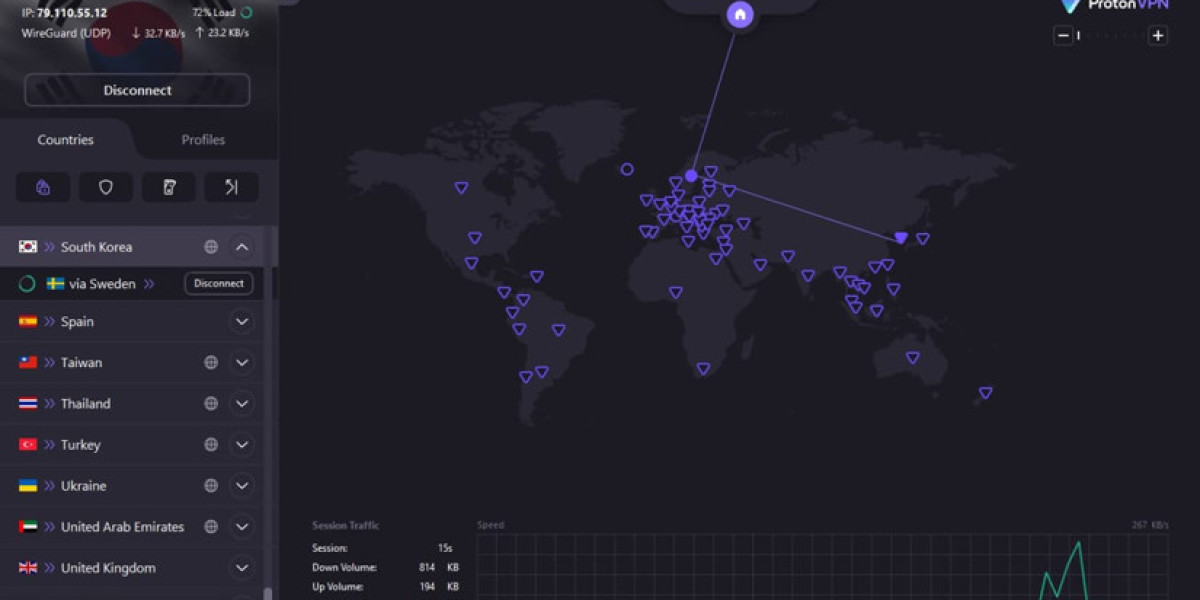Microsoft Defender vs Avast Overview
When it comes to choosing between Microsoft Defender and Avast, there are several key factors to consider. Both are well-known in the antivirus world, but they each have unique strengths and weaknesses.
Firstly, let's take a look at their user bases. Microsoft Defender is pre-installed on all Windows devices, giving it a significant advantage with over 1.5 billion users. In contrast, Avast, while still impressive, protects around 435 million devices globally.
In terms of overall performance, my tests showed that Avast has a slight edge. It offers more advanced features such as protection against webcam hijacking and spam blocking, which can be crucial for many users. Additionally, Avast often provides attractive first-year sign-up discounts, making it a cost-effective option.
Here’s a breakdown of what each antivirus offers:
- Microsoft Defender:
- Completely free
- Comes included with Windows OS
- Offers parental control options
- Strong malware protection scores
- Avast:
- Webcam protection
- Automatically updates apps
- Provides spam blocking
- Offers first-year sign-up discounts
While both antiviruses provide robust protection, Avast's additional features and competitive pricing make it the better choice for those looking for enhanced security and functionality.
Choosing the Right Protection: Microsoft Defender vs Avast
Microsoft Defender: The Built-in Security Solution
Microsoft Defender comes at no additional cost with Windows 10 and 11 systems. Originally launched in 2001, this security tool has evolved significantly from its basic beginnings during the Windows XP era. Today's version offers comprehensive protection as part of the Windows Security ecosystem.
For business environments requiring enhanced security measures, Microsoft offers Defender for Endpoint—a premium solution designed specifically for corporate networks facing sophisticated threats that may require expert intervention.
Avast: The Established Security Specialist
Founded in 1998, Avast has built a reputation as one of the leading names in cybersecurity, currently protecting over 435 million users worldwide. The company's merger with AVG in 2016 allowed them to combine technologies and features from both platforms, creating a more robust security solution.
Cost Considerations
While Microsoft Defender's greatest advantage is its zero-cost integration with Windows operating systems, Avast offers promotional pricing with current discounts of 50% on their Avast One package, which includes additional security features beyond standard antivirus protection.
For budget-conscious users with Windows 10 or newer systems, Microsoft Defender provides immediate protection without installation or subscription fees. However, those seeking advanced features might find value in Avast's premium offerings despite the additional cost.
Avast's multi-tiered security solutions cater to diverse needs with varying price points and feature sets
While the free version provides essential malware scanning and system optimization tools
its standout offering includes a limited-capacity VPN (5GB weekly) and password leak detection
Premium tiers unlock unlimited VPN access and expanded threat prevention
including ransomware shields and vulnerability patching for Windows OS
Family plans scale protection across 30 devices with shared security controls
All paid subscriptions feature aggressive introductory pricing
with first-year discounts dropping 30-50% before reverting to standard rates
A 30-day refund window applies to all plans for risk-free evaluation
Cross-platform compatibility remains a key advantage
supporting Windows, macOS, Android, and iOS ecosystems
unlike Microsoft's OS-exclusive Defender
Real-world testing involved both controlled EICAR samples
and live malware including trojans and adware variants
Compressed executable files were analyzed in sandbox environments
to assess detection capabilities across both security platforms
In my daily use, I aimed to evaluate the performance of Windows Defender and Avast in their continuous, always-on scanning mode. Ideally, I expected to receive a notification of any threats when I downloaded the malware samples.
One notable feature of Microsoft Defender is its ability to coexist with other third-party antivirus software, such as Avast. It achieves this by selectively disabling some of its own security features, which can be very convenient for users.
During the test, Microsoft Defender successfully identified all the malware samples. However, it required me to unzip the fourth EICAR sample before it flagged it as a threat. Despite this, Microsoft Defender effectively blocked the sample once it was unzipped.
On the other hand, Avast One did not perform as well in real-time malware detection. It failed to detect both the compressed and unzipped EICAR samples, as well as the .txt sample. However, it did manage to block all the live samples and one of the EICAR samples.
To further test, I disabled the real-time scanning feature for both software and ran a quick scan. Interestingly, both antivirus products failed to detect any of the samples during these scans.
Antivirus Solutions Comparison
Independent testing labs provide critical insights into antivirus effectiveness
AV-Comparatives' Real World Protection Trial evaluates defense against emerging online threats
Malware Protection Assessments focus on dormant infections and physical media risks
During 2021 evaluations, Avast demonstrated near-perfect threat interception
99.9% detection rate with minimal false positives marked its performance
Microsoft's solution showed strong but slightly inconsistent results
Blocking 99.7% of threats yet allowing unexpected live samples in controlled tests
AV-Test Institute revealed contrasting patterns in detection capabilities
Both solutions achieved perfect scores against zero-day attacks
Avast maintained flawless detection of widespread malware across both testing periods
Microsoft showed minor fluctuations between 99.9% and 100% detection rates
Real-world validation through custom testing exposed operational differences
Avast detected 100% of threats during active system scans
Microsoft permitted unexpected compromises despite real-time protection claims
Performance metrics reveal hidden operational costs
Resource consumption during scans and updates impacts user experience
CPU utilization and memory allocation patterns differ between solutions
Disk activity spikes during database updates affect multitasking capabilities
Balancing detection accuracy with system impact remains crucial
False positive rates influence software reliability and user trust
Laboratory results versus practical implementation show notable variations
Continuous protection requires optimizing both security and performance
In my evaluation, Avast took 186 minutes to complete a full scan, examining 1,870,000 files. In contrast, Microsoft Defender finished in just 60 minutes but scanned only 302,823 files.
While Microsoft Defender is faster, the thoroughness of Avast's scan was more impressive. A deeper examination of the system, as provided by Avast, can uncover more hidden threats, which is why it detected a higher number of potential issues compared to Microsoft Defender.
When it comes to system resource usage, there is a noticeable difference between the two. As a built-in Windows feature, Microsoft Defender consumes fewer resources. On the other hand, Avast, being a third-party application, demands more from the system. This is particularly evident when both programs are running in the background.
Performance metrics reveal notable contrasts between the two antivirus solutions. While Microsoft Defender demonstrated lower disk and memory usage during full scans compared to Avast, its CPU demands spiked higher. Independent testing by AV-Comparatives highlights Defender’s efficiency in most performance categories, though it lagged in initial file transfers and archive operations. Avast edged ahead overall but showed delays during app launches.
Feature sets diverge significantly. Microsoft’s offering integrates tightly with Windows ecosystems, providing biometric login via Windows Hello and cloud backups through OneDrive. Its family safety tools offer parental oversight for connected devices. Avast Premium Security, however, casts a wider net with cross-platform device coverage, webcam access controls, and irreversible file deletion to prevent data recovery by malicious actors.
Installation experiences differ starkly. Defender requires zero setup for Windows users, though optimizing advanced protections like ransomware shields demands manual configuration. Avast necessitates purchasing a license but simplifies deployment across devices post-purchase, with refund processing proving hassle-free in practice. Both solutions deliver swift scanning capabilities post-installation without overwhelming system resources.
Security extras tilt the scale. Avast adds niche utilities like network vulnerability scanning, automated software updates, and phishing-resistant email filters. Defender counters with native browser protections and seamless OS integration, though lacks Avast’s hardware-centric safeguards. For users prioritizing multi-device coverage and physical security layers, Avast’s expanded toolkit may justify its price tag, while Defender appeals to those embedded in Microsoft’s ecosystem seeking minimal setup.
Cybersecurity Solution Comparison
Upon launching Windows Security, the dashboard presents a color-coded overview of your system's protection status. Green indicators show properly functioning security features, yellow highlights areas needing attention, and red warnings signal immediate threats requiring action.
The Virus and Threat Protection section offers various scanning options including quick scans for common locations and full system scans for comprehensive protection. This area also maintains your threat history and provides customizable options for handling detected malicious software.
For households with children, the Microsoft Family Safety integration allows parents to monitor and manage their family's digital activities. This includes device usage tracking, website filtering capabilities, and screen time limitations to promote healthy digital habits.
In contrast, Avast Premium Security delivers a more comprehensive interface that balances simplicity with depth. Its design accommodates both novice users seeking straightforward protection and experienced users desiring advanced configuration options and enhanced security features.
When evaluating cybersecurity solutions,
user experience and threat response capabilities
often dictate the final choice between competitors.
Avast emerges as the superior option for real-time protection,
offering advanced scanning algorithms that outperform
Microsoft Defender’s baseline detection systems.
Its suite extends beyond malware defense with tools like
encrypted VPN traffic, permanent file deletion,
and camera access monitoring – features absent in Microsoft’s native solution.
Support structures reveal stark contrasts:
Microsoft restricts free users to community forums,
while Avast Premium subscribers gain prioritized access
to 24/7 live chat and email assistance.
Both platforms maintain self-help repositories,
though Avast’s knowledge base addresses
a wider array of troubleshooting scenarios.
The inclusion of location-masking VPN technology
in Avast’s packages proves particularly valuable for
streaming enthusiasts and travelers needing to bypass
strict geo-blocks or surveillance-heavy networks.
While not essential for basic security,
this layer of privacy complements core antivirus functions effectively.
Despite macOS’s reputation for built-in protection,
installing Avast One remains advisable due to
emerging Mac-specific malware strains.
The software’s lightweight design ensures
minimal system impact while hardening defenses
against phishing and ransomware attacks.
Cost considerations further tilt the balance –
Avast frequently offers substantial introductory discounts,
making premium-grade security accessible without
the enterprise-level pricing of Microsoft’s advanced endpoint protection.
Both solutions demonstrate robust safety protocols,
but Avast’s proactive approach to evolving cyberthreats
and multi-platform compatibility cement its position
as the more versatile guardian for personal devices.
What is a Netflix VPN and How to Get One
A Netflix VPN is a tool designed to help users bypass geographical restrictions and access content libraries from different regions on the streaming platform. By masking the user’s real IP address and routing their connection through servers in other countries, a Netflix VPN enables viewers to unlock shows, movies, and exclusive titles that are unavailable in their local region. This service is particularly popular for expanding entertainment options and overcoming regional content limitations.
Why Choose SafeShell as Your Netflix VPN?
If your Netflix VPN is not working due to outdated software or unreliable connections, SafeShell VPN offers a robust solution for accessing region-restricted content. Designed to bypass strict geo-blocks, SafeShell prioritizes high-speed streaming with servers optimized explicitly for Netflix, eliminating buffering and ensuring uninterrupted HD playback. Its multi-device compatibility allows simultaneous connections across five devices, including smart TVs and mobile platforms, so you can enjoy shows on Apple TV, Android, or iOS without switching accounts or sacrificing speed.
SafeShell VPN further enhances your experience with its unique App Mode, enabling access to multiple regional libraries at once—perfect for exploring global content seamlessly. Advanced security features like the proprietary ShellGuard protocol and military-grade encryption protect your data from tracking, while a flexible free trial lets you test its capabilities risk-free. No more frustrations with a Netflix vpn not working ; SafeShell combines speed, versatility, and ironclad privacy to redefine your streaming journey.
A Step-by-Step Guide to Watch Netflix with SafeShell VPN
To start using SafeShell Netflix VPN , the first step is to subscribe to the service. Visit the SafeShell VPN website and select a plan that suits your needs and budget. Once you have chosen your plan, click the "Subscribe Now" button to complete the subscription process.
Next, download and install the SafeShell VPN app on your device. Go to the SafeShell VPN website and choose the appropriate version for your device, whether it's Windows, macOS, iOS, or Android. After downloading, install the app and launch it. Log in to your account by clicking on the "Log In" button. SafeShell offers two modes, and for the best Netflix experience, it is recommended to use the APP mode.
Finally, choose the VPN server that corresponds to the region whose Netflix content you wish to access. For example, if you want to watch US Netflix, select a server located in the US. Click on "Connect" to establish the connection. Once connected, open the Netflix app or visit the Netflix website, log in with your Netflix account, and enjoy streaming content from the selected region.








